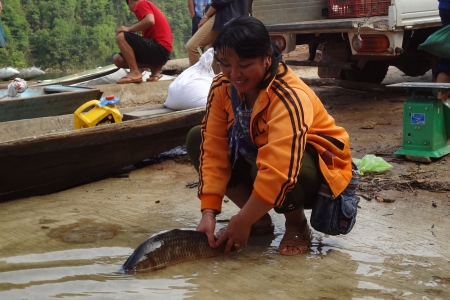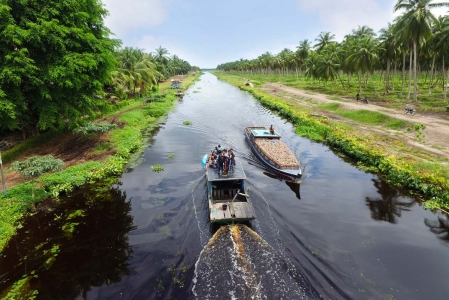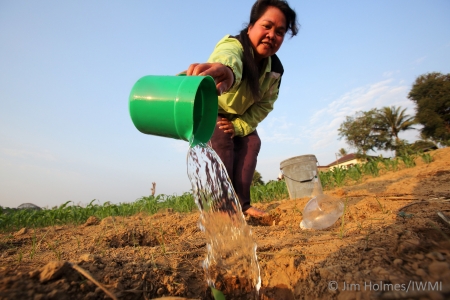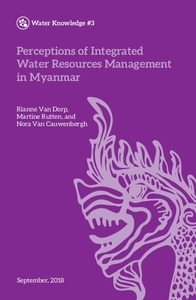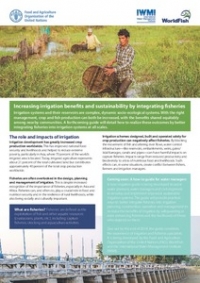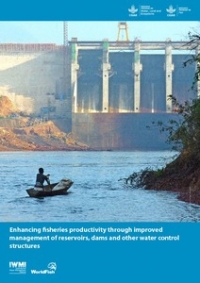This week marks World Fisheries Day and Myanmar is showing us how to negotiate the balancing act among fishers and farmers. Originally published on WorldFish.
-----
In Myanmar, rice is seen as the main staple food and irrigation infrastructure has expanded to boost its production.
But these systems continue to be designed and managed without considering the potential impacts on inland fisheries, which is harming river health and reducing fisheries production.
That’s the finding of new research—by Charles Sturt University, FISH led by WorldFish, WLE and partners. It calls for a more holistic approach to the planning of irrigation systems to ensure sustainable rice production and inland fisheries.
Blocked fish migration routes
Rice, which made up 34 percent of the country’s total cultivated area in 2016, is a significant contributor to national GDP and generates vital income and employment.
Fish is likewise important, with average per capita fish consumption estimated at 30 kg/year, far surpassing the global average of 20.2 kg/year and representing the most important source of protein micronutrients for household diets. An estimated 3.2 million people are directly employed in capture fisheries.
“Together, irrigated rice and inland capture fisheries production are critical for livelihoods and domestic food and nutrition security,” said lead author Dr. John Conallin, a freshwater fish researcher from Charles Sturt University.
“Yet rice production tends to be prioritized over fisheries, in terms of policy attention and support.”
The increase in water infrastructure to regulate water for rice production—like sluices, weirs and regulators—could severely impact on inland fisheries, explains Conallin.
“Connectivity between the sea, rivers and wetlands is essential for fish to complete their lifecycles. But irrigation infrastructure often prevents many of the more than 570 freshwater species—such as hilsa, shad, sea bass, eel and mullet—from migrating or moving between brackish water and freshwater areas to access natural habitats and spawning areas.”
Fish migration and fish passage are not explicit in any water policy or legislative frameworks in Myanmar, finds the research published in Marine and Freshwater Research.
“Currently, there are no examples where fish have been considered in the development or operations of irrigation infrastructure,” said Conallin.
“But this is changing with new fish-friendly irrigation infrastructure projects going ahead through local and international partnership projects.”
The blocking of fish migration routes is contributing to the gradual decline of inland fisheries, say the authors in the article, Migratory fishes in large tropical rivers in Myanmar: Challenges for sustainable development irrigation water control infrastructure and sustainable inland fisheries.
“Subsequently, this is undermining national efforts to develop sustainable inland fisheries to enhance food and nutrition security to meet the Sustainable Development Goals, particularly those on reducing poverty and hunger,” noted Conallin.
Water challenges in Kyonkadun village
Fisher Thet Kyawt Oo of Kyonkadun village in the Ayeyarwady Delta can attest to the challenges created by irrigation infrastructure.
“The irrigation scheme in the village is shallow and I can’t catch enough fish. Even though I’m working hard, I can’t cover my family’s living costs,” said the 54-year-old.
That was one of 10 villagers (3 fishers, 3 farmers and 4 youth) involved in a participatory photo activity run by the CGIAR Research Program on Fish, led by WorldFish, and the International Water Management Institute (IWMI), with support from the CGIAR Research Program on Water, Land and Ecosystems.
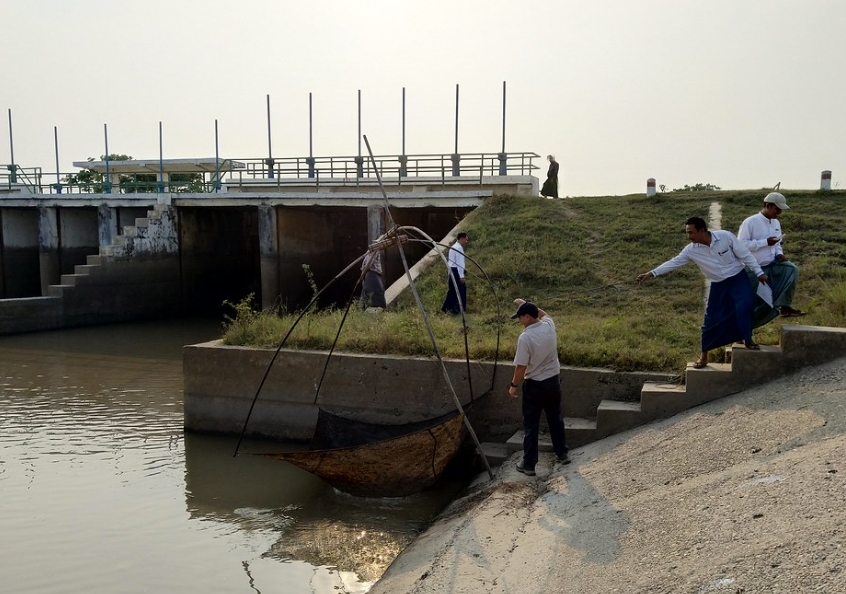
“By photographing and sharing their personal water challenges, people opened discussions with the broader community and local decision makers and illustrated the needs of different user groups,” said IWMI analyst Michelle Ng, who co-led the four-day research activity in November 2018.
A polder with 74km of dikes and 13 sluice gates, some of which act as tidal barrages, was built around Kyonkadun village in 1985 by the Department of Irrigation using World Bank funds. This protected 12,200ha from flooding and tidal influence and enabled 3,075ha of farmland previously affected by salt intrusion to be opened up to agriculture.
But since 2017, the Bar Lah sluice gate has stopped working due to a build-up of sediment.
The photo activity found that this is hurting fishers—but also farmers and community members.
“For a fisherman who is paying money to fish but can’t catch fish due to sedimentation in that area, his income is not covered. This makes earning a livelihood hard,” said fisher Aye Myint, 63.
And local farmers say that crops have been damaged because water cannot drain from the rice fields, a problem worsened during heavier-than-normal rainfall in the 2018 wet season.
Other key livelihoods, like trade, are affected by reduced transport along the waterways.
Water for all
As one of Asia’s fastest-growing economies, Myanmar is focused on achieving sustainable growth, as evidenced by the government's Sustainable Development Plan (2018–2030) and commitment to the 2030 global goals.
Irrigated agriculture and inland fisheries are critical to realizing this vision, says co-author Mike Akester, Myanmar Country Director, WorldFish.
“But the worry is that if irrigation systems continue to expand in the same way, it will greatly harm river health and reduce fisheries production, thereby limiting the potential of fish to reduce malnutrition and enhance food security.”
Akester says a range of solutions are needed to balance the trade-offs between the irrigation and fisheries sectors.
“There’s a need for policy and legislation within Myanmar to support fish migration.
“There need to be cross-sectoral strategies and policies developed that recognize and address the needs of both irrigation and fisheries, without prioritizing one over the other.
“Fisheries issues should be considered in the design and implementation phase of water control infrastructure with mixed-use irrigation systems (as opposed to single use), providing an opportunity to promote win-win solutions.”
“The fisheries and irrigation sectors need to be supported and encouraged to collaborate, including on research projects to build knowledge around migratory fisheries and the trade-offs linked with irrigation infrastructure.”
If this delicate water balance can be achieved, it will leave fishers and farmers alike happy.
“Right now, if the [Bar Lah] sluice gate, the small stream, the main streams are repaired again, then our family table can be happy with a lot of dishes and I can be a farmer who makes donations [to the local monastery],” said farmer U Han Thein.
-----
Research above is supported by Charles Sturt University, FISH led by WorldFish, Flora and Fauna International, Ministry of Agriculture, Livestock and Irrigation, and Hull International Fisheries Institute, and the CGIAR Research Program on Water, Land and Ecosystems.
Thrive blog is a space for independent thought and aims to stimulate discussion among sustainable agriculture researchers and the public. Blogs are facilitated by the CGIAR Research Program on Water, Land and Ecosystems (WLE) but reflect the opinions and information of the authors only and not necessarily those of WLE and its donors or partners. WLE and partners are supported by CGIAR Trust Fund Contributors, including: ACIAR, DFID, DGIS, SDC, and others.



